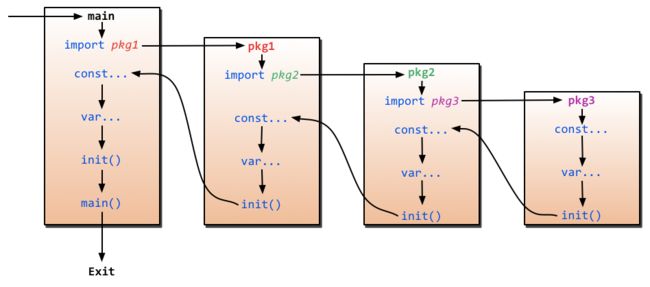听闻Go号称“21世纪的C语言”,又比较适合做Web后端的应用,加之本人对C/C++比较熟悉,计划通过构建一个提供Restful API的服务来达到学习的目的。
github上浏览了一下相关的框架挺多,如:hugo、gin、beego、echo、iris等,还有mux(A powerful URL router and dispatcher)看上去也颇为合适。由于本人Web开发(java/php/node.js什么的都不会)小白,打算先从beego入手。
一、创建API项目并运行
1. beego的项目可以通过bee工具来创建,RESTful的项目通过api参数来创建。创建imc项目命令:
bee api imc
如此会在$GOPATH/src目录下生成一个imc目录。
2. 运行imc项目,启动swagger便于测试。
先进入到$GOPATH/src/imc目录下,执行以下命令:
bee run -gendoc=true -downdoc=true
如此便启动了API自动化文档,以及会自动下载swagger。浏览器直接访问http://localhost:8080/swagger/即可进行测试。
-gendoc=true表示每次会自动化的build文档,-downdoc=true表示会自动下载swagger文档查看器。
二、自动生成文件(代码)分析
1. imc/conf/app.conf
app.conf是beego的默认配置文件。
appname = imc httpport = 8080 runmode = dev autorender = false copyrequestbody = true EnableDocs = true
appname: 应用名称,默认是beego。通过bee new或bee api创建,则是项目名称。beego.BConfig.AppName = "imc"。
httpport:应用监听端口,默认是8080。beego.BConfig.Listen.HTTPPort = 8080。
runmode:应用的运行模式,可选值为prod、dev或test。默认是dev开发模式。beego.BConfig.RunMode = "dev"。
autorender:是否模板自动渲染,默认值为true,对于API类型的应用,需要把该项设为false。beego.BConfig.WebConfig.AutoRender = true。
copyrequestbody:是否允许在HTTP请求时,返回原始请求体数据字节,默认为false(GET or HEAD or 上传文件请求除外)。beego.BConfig.CopyRequestBody = false。
EnableDocs:是否开启文档内置功能,默认为false。beego.BConfig.WebConfig.EnableDocs = true。
2. main.go
package main
import (
_ "deepspirit/imc/routers"
"github.com/astaxie/beego"
)
func main() {
if beego.BConfig.RunMode == "dev" {
beego.BConfig.WebConfig.DirectoryIndex = true
beego.BConfig.WebConfig.StaticDir["/swagger"] = "swagger"
}
beego.Run()
}
程序入口,通过beego.Run()将beego的框架运行起来。当以dev开发者模式启动时,设置一些参数。(暂时不用关注)
import中的_ "deepspirit/imc/routers"语句目的是执行routers包中的init函数。Go允许一个package中多个文件包含init函数,执行顺序为文件名字母顺序。
Go语言的代码执行过程如下图:
3. imc/routers/*.go
commentsRouter_controller.go:根据router.go和controllers/*.go自动生成。从beego 1.3版本开始支持注解路由功能,用户无需在router中注册路由,只需要Include相应的controller,然后在controller的method方法上面写上router注释(// @router)即可。
router.go:
package routers
import (
"deepspirit/imc/controllers"
"github.com/astaxie/beego"
)
func init() {
ns := beego.NewNamespace("/v1",
beego.NSNamespace("/object",
beego.NSInclude(
&controllers.ObjectController{},
),
),
beego.NSNamespace("/user",
beego.NSInclude(
&controllers.UserController{},
),
),
)
beego.AddNamespace(ns)
}
添加/v1/object/对应ObjectController中的注解路由。
添加/v1/user/对应UserControoler中的注解路由。
4. imc/controllers/*.go
object.go:
package controllers
import (
"deepspirit/imc/models"
"encoding/json"
"github.com/astaxie/beego"
)
// Operations about object
type ObjectController struct {
beego.Controller
}
// @Title Create
// @Description create object
// @Param body body models.Object true "The object content"
// @Success 200 {string} models.Object.Id
// @Failure 403 body is empty
// @router / [post]
func (o *ObjectController) Post() {
var ob models.Object
json.Unmarshal(o.Ctx.Input.RequestBody, &ob)
objectid := models.AddOne(ob)
o.Data["json"] = map[string]string{"ObjectId": objectid}
o.ServeJSON()
}
// @Title Get
// @Description find object by objectid
// @Param objectId path string true "the objectid you want to get"
// @Success 200 {object} models.Object
// @Failure 403 :objectId is empty
// @router /:objectId [get]
func (o *ObjectController) Get() {
objectId := o.Ctx.Input.Param(":objectId")
if objectId != "" {
ob, err := models.GetOne(objectId)
if err != nil {
o.Data["json"] = err.Error()
} else {
o.Data["json"] = ob
}
}
o.ServeJSON()
}
// @Title GetAll
// @Description get all objects
// @Success 200 {object} models.Object
// @Failure 403 :objectId is empty
// @router / [get]
func (o *ObjectController) GetAll() {
obs := models.GetAll()
o.Data["json"] = obs
o.ServeJSON()
}
// @Title Update
// @Description update the object
// @Param objectId path string true "The objectid you want to update"
// @Param body body models.Object true "The body"
// @Success 200 {object} models.Object
// @Failure 403 :objectId is empty
// @router /:objectId [put]
func (o *ObjectController) Put() {
objectId := o.Ctx.Input.Param(":objectId")
var ob models.Object
json.Unmarshal(o.Ctx.Input.RequestBody, &ob)
err := models.Update(objectId, ob.Score)
if err != nil {
o.Data["json"] = err.Error()
} else {
o.Data["json"] = "update success!"
}
o.ServeJSON()
}
// @Title Delete
// @Description delete the object
// @Param objectId path string true "The objectId you want to delete"
// @Success 200 {string} delete success!
// @Failure 403 objectId is empty
// @router /:objectId [delete]
func (o *ObjectController) Delete() {
objectId := o.Ctx.Input.Param(":objectId")
models.Delete(objectId)
o.Data["json"] = "delete success!"
o.ServeJSON()
}
// @router / [post]
该注解路由表示支持/v1/object/的POST方法(此处url为/,结合router.go中的/v1/object)
// @router /:objectId [get]
该注解路由表示支持/v1/object/{objectId}的GET方法
// @router / [get]
该注解路由表示支持/v1/object的GET方法
// @router /:objectId [put]
该注解路由表示支持/v1/object/{objectId}的PUT方法
// @router /:objectId [delete]
该注解路由表示支持/v1/object/{objectId}的DELETE方法
user.go:
package controllers
import (
"deepspirit/imc/models"
"encoding/json"
"github.com/astaxie/beego"
)
// Operations about Users
type UserController struct {
beego.Controller
}
// @Title CreateUser
// @Description create users
// @Param body body models.User true "body for user content"
// @Success 200 {int} models.User.Id
// @Failure 403 body is empty
// @router / [post]
func (u *UserController) Post() {
var user models.User
json.Unmarshal(u.Ctx.Input.RequestBody, &user)
uid := models.AddUser(user)
u.Data["json"] = map[string]string{"uid": uid}
u.ServeJSON()
}
// @Title GetAll
// @Description get all Users
// @Success 200 {object} models.User
// @router / [get]
func (u *UserController) GetAll() {
users := models.GetAllUsers()
u.Data["json"] = users
u.ServeJSON()
}
// @Title Get
// @Description get user by uid
// @Param uid path string true "The key for staticblock"
// @Success 200 {object} models.User
// @Failure 403 :uid is empty
// @router /:uid [get]
func (u *UserController) Get() {
uid := u.GetString(":uid")
if uid != "" {
user, err := models.GetUser(uid)
if err != nil {
u.Data["json"] = err.Error()
} else {
u.Data["json"] = user
}
}
u.ServeJSON()
}
// @Title Update
// @Description update the user
// @Param uid path string true "The uid you want to update"
// @Param body body models.User true "body for user content"
// @Success 200 {object} models.User
// @Failure 403 :uid is not int
// @router /:uid [put]
func (u *UserController) Put() {
uid := u.GetString(":uid")
if uid != "" {
var user models.User
json.Unmarshal(u.Ctx.Input.RequestBody, &user)
uu, err := models.UpdateUser(uid, &user)
if err != nil {
u.Data["json"] = err.Error()
} else {
u.Data["json"] = uu
}
}
u.ServeJSON()
}
// @Title Delete
// @Description delete the user
// @Param uid path string true "The uid you want to delete"
// @Success 200 {string} delete success!
// @Failure 403 uid is empty
// @router /:uid [delete]
func (u *UserController) Delete() {
uid := u.GetString(":uid")
models.DeleteUser(uid)
u.Data["json"] = "delete success!"
u.ServeJSON()
}
// @Title Login
// @Description Logs user into the system
// @Param username query string true "The username for login"
// @Param password query string true "The password for login"
// @Success 200 {string} login success
// @Failure 403 user not exist
// @router /login [get]
func (u *UserController) Login() {
username := u.GetString("username")
password := u.GetString("password")
if models.Login(username, password) {
u.Data["json"] = "login success"
} else {
u.Data["json"] = "user not exist"
}
u.ServeJSON()
}
// @Title logout
// @Description Logs out current logged in user session
// @Success 200 {string} logout success
// @router /logout [get]
func (u *UserController) Logout() {
u.Data["json"] = "logout success"
u.ServeJSON()
}
// @router / [post]
该注解路由表示支持/v1/user/的POST方法
// @router / [get]
该注解路由表示支持/v1/user/的GET方法
// @router /:uid [get]
该注解路由表示支持/v1/user/{uid}的GET方法
// @router /:uid [put]
该注解路由表示支持/v1/user/{uid}的PUT方法
// @router /:uid [delete]
该注解路由表示支持/v1/user/{uid}的DELETE方法
// @router /login [get]
该注解路由表示支持/v1/user/login的GET方法
// @router /logout [get]
该注解路由表示支持/v1/user/logout的GET方法
5. imc/models/*.go
object.go和user.go,代码不再罗列。model层主要数据与数据库相关的操作,自动生成的例子不含数据库操作,后续ORM的部分放在该目录下。
三、ORM使用
1. 安装MySQL 8
2. 下载Go语言的驱动
go get github.com/go-sql-driver/mysql
3. 使用orm访问数据库
func init() {
// set default database
orm.RegisterDataBase("default", "mysql", "username:password@tcp(127.0.0.1:3306)/db_name?charset=utf8", 30)
// register model
orm.RegisterModel(new(models.Role))
// create table
orm.RunSyncdb("default", false, true)
}
注册模型之后,调用RunSyncdb,若对应模型的表不存在会自动创建。以上代码考虑放在main.go中。
向models目录中添加role.go,代码如下:
